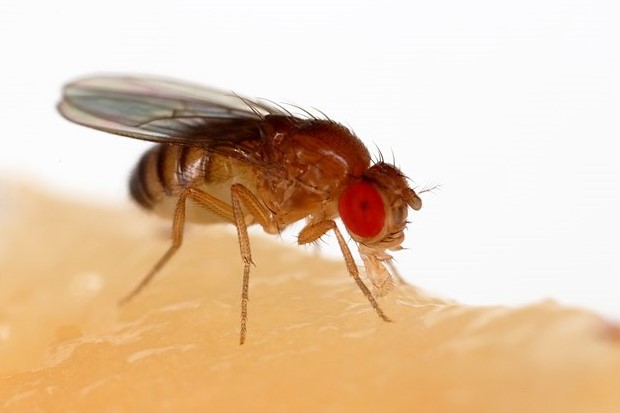How do insects feel the heat?
New research in fruit flies by biologist Paul Garrity’s lab suggests it may be related to “Heating and Cooling Cells” in the insects’ antennae.


Paul Garrity
Every year, nearly 700 million people contract mosquito-borne illnesses such as malaria, dengue, West Nile virus or yellow fever.
Mosquitoes are so good at spreading disease in large part because of their ability to seek out humans and feed on them. Both of these abilities depend on the acute sensitivity of a mosquito to its environment’s temperature.
When a female mosquito gets a whiff of carbon dioxide, alerting them to a potential victim in the vicinity, it becomes drawn to heat and humidity. These cues help the mosquito find us and then begin to probe the warmest spots on our skin, which happen to be where the blood vessels reside.
To gain clues into how the mosquitoes’ sensory systems might operate, scientists often study how these processes work in fruit flies, whose physiology is similar, but easier to study.
In a new paper in the journal Neuron, professor of biology Paul Garrity and his lab upend the traditional understanding of how flies sense and respond to temperature. The work may one day lead to more effective methods of keeping mosquitoes away from humans.
Fruit flies, a.k.a. Drosophila melanogaster, sense temperatures using neurons at the tips of their antenna. However, researchers had long thought that these neurons acted like thermometers, reporting on whether the temperature was hot or cold. This is reflected in the names given to these neurons: the Hot and Cold Cells.
As fruit flies are drawn to mild temperatures, it was assumed that Hot and Cold Cells signaled to the insects’ brains that it was either too warm or cold, allowing the flies to steer themselves to their Goldilocks zone, where the temperature was just right.
Using a new method devised by post-doctoral fellow Gonzalo Budelli, Garrity and his colleagues found that Hot and Cold Cells don’t detect hot and cold after all. Rather, they respond to changes in temperature.
For this reason, they propose renaming these neurons Heating and Cooling Cells. Together these cells don’t tell the animals whether the environment is hot or cold, but only that the temperature is rising or falling. “They simply let the animal know that the temperature is changing,” Garrity said.
Drosophila have six Heating and six Cooling Cells, with three of each type in each antenna. They are exquisitely sensitive to fluctuations in temperature. Garrity’s lab found they can detect a few hundredths of a degree change per second — “incredibly subtle changes in thermal energy,” Garrity said. As a result of this sensitivity, fruit flies are guided with the most precision and efficiency toward their Goldilocks zone. These findings suggest that mosquitoes may use a similar system to help drive precise and efficient movement of mosquitoes to their warm-blooded targets.
Garrity suspects that fruit flies may also have Hot and Cold Cells, they are just not the ones scientists had thought they were.
The paper’s coauthors were: Gonzalo Budelli, Lena van Giesen, Zachary A. Knecht, Elaine C. Chang of Brandeis; Lina Ni of Virginia Tech; Benjamin Kaminski and Mason Klein of the University of Miami; Ana F. Silbering and Richard Benton of the University of Lausanne; Aravi Samuel of Harvard University; Cristina Berciu of McLean Hospital; and Daniela Nicastro of the University of Texas Southwestern Medical Center.
Categories: Research, Science and Technology





